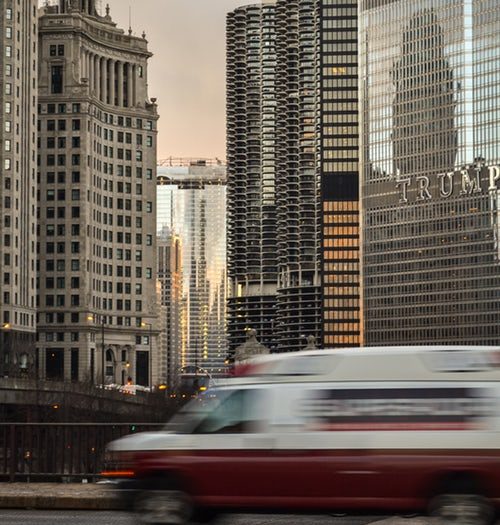JUST THE OTHER DAY, I was travelling towards a major intersection when an ambulance approached from the opposite direction, sirens wailing and all lights flashing. It was educational to see how the motorists around me reacted.
Because of the multitude of flashing lights, the intentions of the ambulance driver weren’t clear – if he was using an indicator it was overwhelmed by the other lights. However, he was faced with three options: travelling straight ahead through the intersection (at the time, he was faced with a green light); turning left; or turning right.
Most of the drivers on my side of the road (i.e. driving towards the oncoming ambulance) continued on their way, entering and crossing the intersection. Drivers travelling in the same direction as the ambulance mostly pulled across to the left to give the driver a clear run along the outside lane. Drivers on the cross street, waiting for a green light, continued to sit without moving.
I (and one or two other drivers) anticipated that the ambulance may have intended to turn right (in other words, across our path) and so slowed or stopped. Other drivers travelling in the same direction as us became quite agitated that we had slowed or stopped and drove around us and through the intersection. As it happened, the ambulance did intend to turn right. The driver entered the intersection and then had to come to a complete standstill until the other vehicles realised his intention and cleared the intersection.
The potential for carnage is obvious, but what action should drivers have taken?
MAKING THE ROADS SAFE FOR EMERGENCY VEHICLES.
Most road users want to help emergency services vehicles but are not always sure what they are expected to do when an emergency vehicle approaches. This puts them in danger, and puts the emergency vehicle driver and other road users at risk.
Rules vary from state to state. In South Australia, for instance, when passing a stationary emergency vehicle with flashing red and blue lights, drivers are expected to slow to 25km/h. In other states, drivers are required to slow to 40km/h and expected to use common sense and be aware that emergency personnel may be on the road.
Despite the differing rules in each state, some things are consistent when an emergency vehicle is approaching, either from the rear, from ahead or from the side.
1. Take whatever action you can to give the emergency vehicle a clear run, but wherever possible, stay legal and always stay safe. Nobody expects you to put yourself or others at risk to help an emergency vehicle, or to break the law while doing so. On the other hand, if entering an intersection through a red light is the only way to give an emergency vehicle clearance, you should do so, but only after ensuring that it is safe. If you subsequently receive an expiation notice, explaining why you had to ignore the red light will almost certainly ensure the fine and penalty is waived.
2. Flashing lights and wailing sirens can be stressful, but don’t panic. Remain calm and pay close attention to your surroundings, including road signs, traffic lights and other traffic. Many of the problems that arise with emergency vehicles come about because drivers haven’t recognised their approach. If your sound system is cranked up and your windows are closed, you may not hear the siren until the last moment. If you aren’t paying attention, an emergency vehicle can come up behind you almost unnoticed. The earlier you spot an emergency vehicle, the more time you have to plan and take the appropriate action.
3. Don’t second guess which emergency vehicles deserve your help and which ones don’t. Take the attitude that every emergency vehicle needs your help to get a clear path and take the appropriate action. Consistently thoughtful and courteous behaviour makes it safer for everyone.
4. If you slow down or stop, be aware that surrounding traffic may not have noticed the emergency vehicle and wonder why you are slowing or stopping. Use your hazard warning lights to warn these other drivers that you are taking a possibly unexpected action. If you do slow or stop, don’t move off or accelerate until the emergency vehicle has passed completely, and check that there aren’t other emergency vehicles following along (as often happens with fire appliances, for example). When you do move off again, check your surroundings and other traffic and road users to ensure it’s safe to do so.
Whilst every care has been taken in the preparation of this article, it does not constitute legal advice and, due to the complexity and inconsistency of different state traffic laws, may contain factual errors. If you are involved in an incident on the road, it is recommended that you seek independent legal advice.
